15(R)-PROSTAGLANDIN E1
- CAS NO.:19313-28-1
- Empirical Formula: C20H36O5
- Molecular Weight: 356.5
- MDL number: MFCD00135208
- SAFETY DATA SHEET (SDS)
- Update Date: 2024-10-23 13:36:13
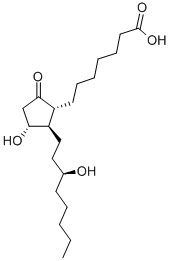
What is 15(R)-PROSTAGLANDIN E1?
Description
13,14-
The Uses of 15(R)-PROSTAGLANDIN E1
Prostaglandin E0 is a metabolite of Prostaglandin E1 (P838600) and can inhibit aggregation, ATP release, and thromboxane generation by human platelets. Prostaglandin E0 can also decrease the formation of cyclooxygenase (COX) metabolites by inhibiting the induction of COX-2 protein by LPS.
What are the applications of Application
13,14-Dihydro-prostaglandin E1 (PGE0) is a PGE1 metabolite that inhibits platelet aggregation & shows antimitotic activity
Definition
ChEBI: 13,14-Dihydro PGE1 is a prostanoid.
Properties of 15(R)-PROSTAGLANDIN E1
| Boiling point: | 541.4±35.0 °C(Predicted) |
| Density | 1.075±0.06 g/cm3(Predicted) |
| storage temp. | Refrigerator, under inert atmosphere |
| solubility | Ethyl Acetate, Methanol, Tetrahydrofuran |
| form | Colorless to pale yellow oil |
| pka | 4.77±0.10(Predicted) |
| Stability: | Volatile |
Safety information for 15(R)-PROSTAGLANDIN E1
Computed Descriptors for 15(R)-PROSTAGLANDIN E1
New Products
Tert-butyl bis(2-chloroethyl)carbamate 4-Methylphenylacetic acid N-Boc-D-alaninol N-BOC-D/L-ALANINOL 3-Morpholino-1-(4-nitrophenyl)-5,6-dihydropyridin- 2(1H)-one Furan-2,5-Dicarboxylic Acid Tropic acid 1,1’-CARBONYLDIIMIDAZOLE DIETHYL AMINOMALONATE HYDROCHLORIDE R-2-BENZYLOXY PROPIONIC ACID 1,1’-CARBONYLDI (1,2-4 TRIAZOLE) N-METHYL INDAZOLE-3-CARBOXYLIC ACID (2-Hydroxyphenyl)acetonitrile 4-Bromopyrazole 5-BROMO-2CYANO PYRIDINE 5,6-Dimethoxyindanone 5-broMo-2-chloro-N-cyclopentylpyriMidin-4-aMine 2-(Cyanocyclohexyl)acetic acid 4-methoxy-3,5-dinitropyridine 2-aminopropyl benzoate hydrochloride 1-(4-(aminomethyl)benzyl)urea hydrochloride diethyl 2-(2-((tertbutoxycarbonyl)amino) ethyl)malonate tert-butyl 4- (ureidomethyl)benzylcarbamate Ethyl-2-chloro((4-methoxyphenyl)hydrazono)acetateRelated products of tetrahydrofuran
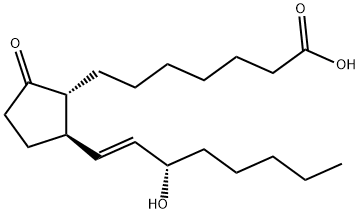


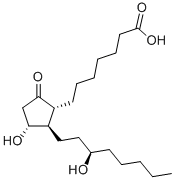

![8-[(3S,4S)-4α-[(Z)-2-Pentenyl]-5-oxo-1-cyclopentene-3α-yl]octanoic acid](https://img.chemicalbook.in/CAS/GIF/85551-10-6.gif)
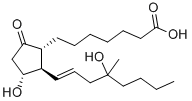
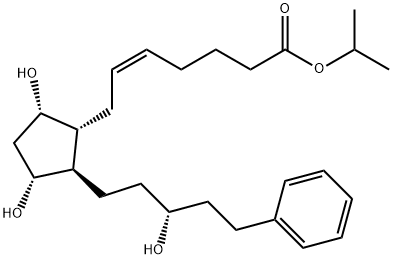
You may like
-
 2033-24-1 98%View Details
2033-24-1 98%View Details
2033-24-1 -
 1975-50-4 98%View Details
1975-50-4 98%View Details
1975-50-4 -
 2-HYDROXY BENZYL ALCOHOL 98%View Details
2-HYDROXY BENZYL ALCOHOL 98%View Details
90-01-7 -
 2-Chloro-1,3-Bis(Dimethylamino)Trimethinium Hexafluorophosphate 221615-75-4 98%View Details
2-Chloro-1,3-Bis(Dimethylamino)Trimethinium Hexafluorophosphate 221615-75-4 98%View Details
221615-75-4 -
 61397-56-6 CIS BROMO BENZOATE 98%View Details
61397-56-6 CIS BROMO BENZOATE 98%View Details
61397-56-6 -
 14714-50-2 (2-Hydroxyphenyl)acetonitrile 98+View Details
14714-50-2 (2-Hydroxyphenyl)acetonitrile 98+View Details
14714-50-2 -
 118753-70-1 98+View Details
118753-70-1 98+View Details
118753-70-1 -
 733039-20-8 5-broMo-2-chloro-N-cyclopentylpyriMidin-4-aMine 98+View Details
733039-20-8 5-broMo-2-chloro-N-cyclopentylpyriMidin-4-aMine 98+View Details
733039-20-8